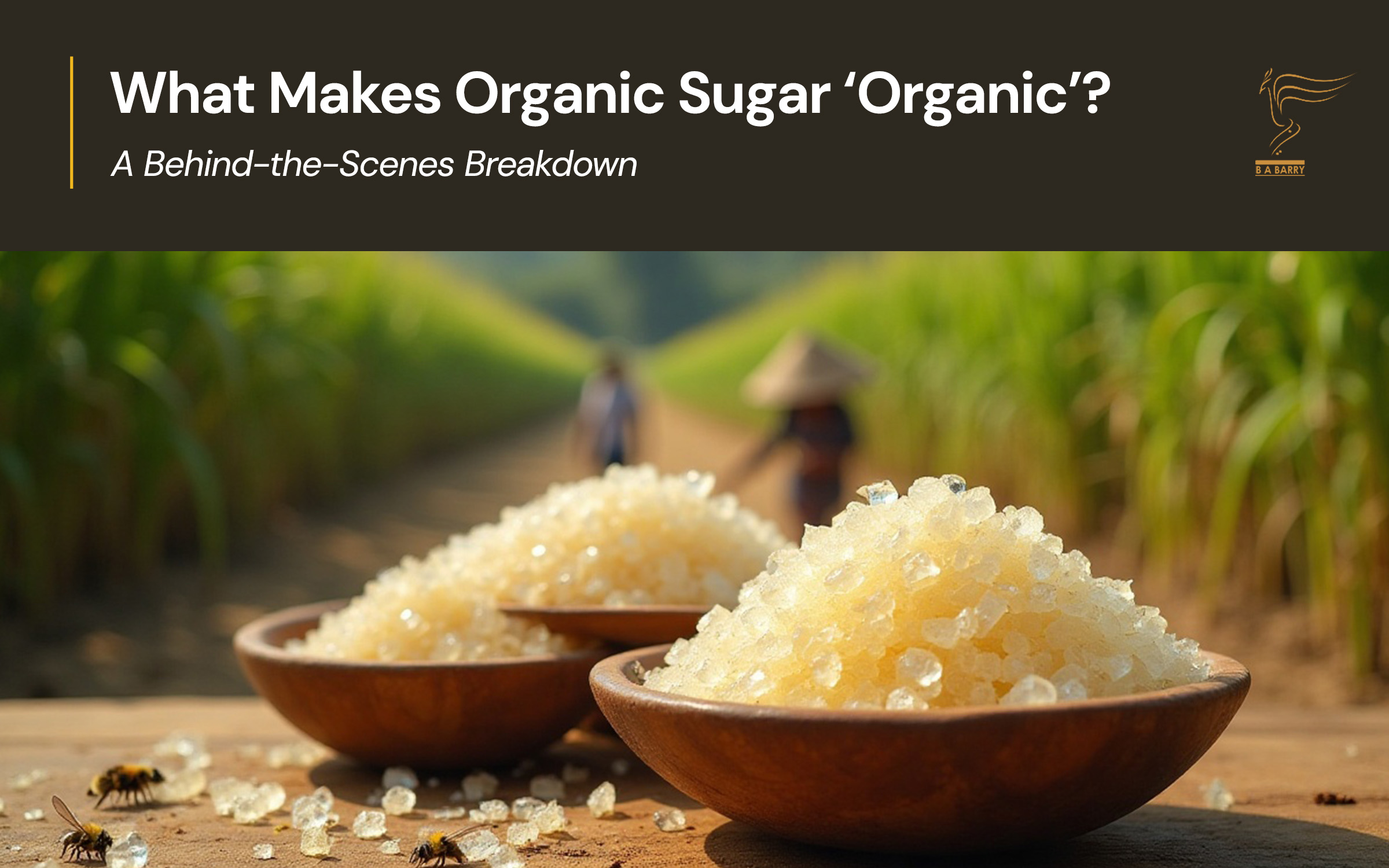- Tokyo : 08:11 |
- Singapore : 07:11 |
- Dubai : 03:11 |
- London : 23:11 |
- New York : 18:11 |
- Sydney : 10:11

The demand for organic sugar has risen significantly following changes in consumer adoption for a better lifestyle as well as the increase in awareness of the benefits of organic sugar. Sugar cane sources dominate the global market by type.
Recent data suggests the market value of organic sugar is steadily progressing to reach USD 4.53 billion by 2033. This growth is marked by a 16.48% CAGR from 2025 - 2033.
What’s making organic sugar a preferred option these days? How is it different from regular sugar and what makes it truly organic? Let’s break it down.
Organic foods, including sugar, are grown and processed in accordance with federal guidelines. These guidelines address various aspects such as soil quality, pest and weed control and the use of additives.
Organic sugar is a term that applies to all sugar that is grown and processed in line with these guidelines. There are two sources from which organic sugar can be obtained — sugar cane and sugar beets. Mind you, the sugar that comes from both these sources is very identical.
There are four important criteria that organic sugar must meet. These include:
It should be grown without chemicals, fertilizers, pesticides or herbicides.
It cannot contain any GMO (Genetically Modified Organisms) during any stage of production.
Organic sugar cannot be subjected to bleaching agents or any other chemicals.
The process of growing organic sugar should prioritize environmental stability.
Read more about organic sugar and refined sugar in our blog, Organic Sugar vs. Regular Sugar: What’s the Difference?
The first step is to grow sugar cane. The field in which the sugar cane will grow needs to be free of pesticides, chemical fertilizers and herbicides for three years and it needs to be certified for the same. Only manure and compost, again organic, are allowed.
Harvesting is usually done by hands once the sugar cane matures. In some instances, machines that minimize environmental damage will be used. What is important to note here is that there will be no burning of plants for removing excess leaves. It is a common practice while harvesting non-organic cane but is strictly prohibited for organic cane.
Following harvesting, the sugarcanes are washed carefully before being crushed in the rollers for juice extraction. If the roller was previously used to crush non-organic sugar cane, then it needs to be thoroughly cleaned.
This is the stage where all the impurities in the raw juice, like plant material, dirt and fibers from the stalks are removed. Since the producers cannot use clarifying agents (which are otherwise used for non-organic sugar), they use natural ingredients to remove impurities. For instance, lime or vegetable-based flocculants.
After clean juice is obtained, it is left to evaporate and form a thick concentrate. During this process, tiny sugar crystals are added to help form the bigger sugar crystals. Two other things happen here. The juice’s texture starts to resemble that of molasses and the taste is similar to that of caramel.
A centrifuge is used to separate the large sugar crystals from the molasses base. However, some amount of molasses is allowed behind which gives organic sugar its color. In contrast, non-organic sugar has no molasses in it.
The final step in the process is to dry the sugar crystals you have just separated. When they dry, organic sugar may have a clumpy texture due to the presence of molasses.
Bone char is a black granular material resulting from the charring of animal bones. Historically, bone char has been used in the sugar industry to refine sugar. It works as a decolorizing and deashing agent, especially in cane sugar, because it contains a higher amount of colored impurities. The alternative to bone char is activated charcoal or ion-exchange resins.
The use of bone char is completely prohibited in organic sugar because organic sugar does not undergo the process of filtration. Thus it becomes suitable for both vegetarians as well as vegans.
Some of the popular health benefits of organic sugar, when compared to refined sugar, are:
Presence of natural molasses, which retains essential vitamins and minerals like vitamins B6 and C, calcium, potassium and iron.
Contains 17 amino acids, including pipecolic acid.
Retained molasses may improve energy levels and support immune function.
A lower glycemic index that prevents a spike in blood sugar levels.
Geohoney’s organic sugar offers a full range of benefits to its consumers as well as the planet. The production process prioritizes sustainability at all stages. Not to forget the significant health benefits it offers, including the low glycemic index, vitamins and minerals. Moreover, it is well suited for vegetarians as well as vegans.
Do consider introducing it to your daily routine for all the benefits it has for you!